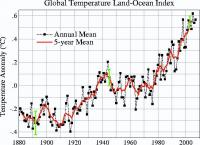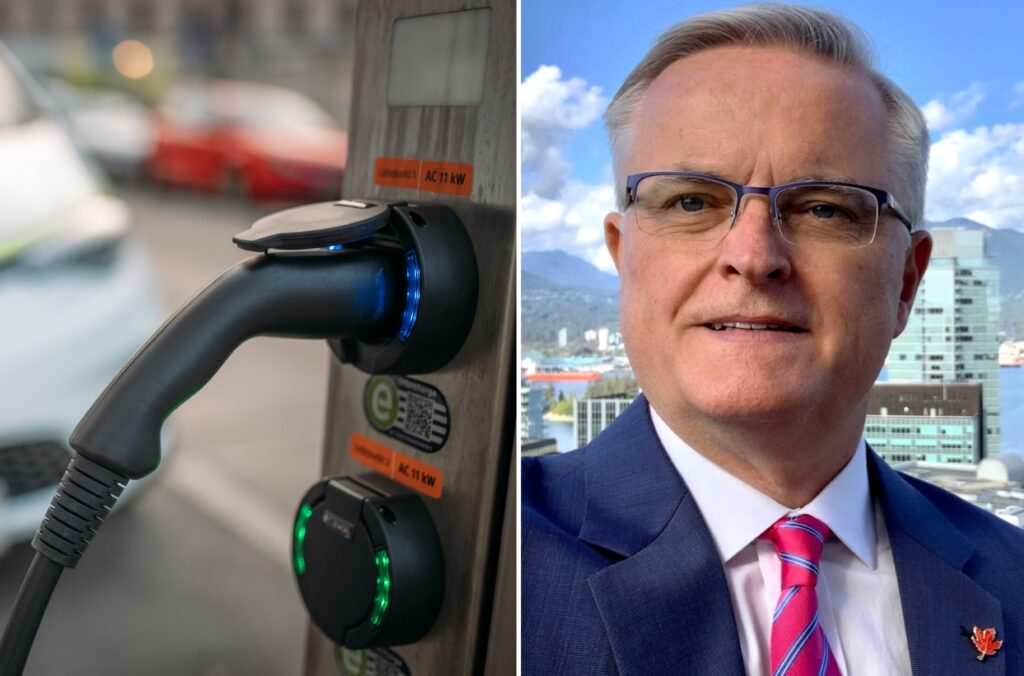At some level, it’s hard not to feel sympathy for global warming skeptics. It must take a lot of resolve and perseverance to keep pushing an idea that everyone knows is blatantly false(presumably, them too). That is, until you actually start reading some of the material they try to pass off as sober-minded research.
What I find pathetic is not so much the content, which, as we all know, is easily disprovable, but the fact that their views have barely evolved over the years – even as the science has progressed and clarified. A perfect example of this regressive mentality is a speech that was recently given by Kenneth P. Green, a resident scholar at the American Enterprise Institute (AEI).
The AEI has been a vocal hotbed of global warming skepticism and is one of several think tanks to have received funding from ExxonMobil – more than $1.6 million over a period of several years, according to an article published last year in The Guardian. (The same article revealed that the AEI had offered to pay $10,000 to any scientist or economist willing to undermine the IPCC’s Fourth Assessment Report.)
Along with several of his colleagues, Green has previously dismissed efforts to cut greenhouse gas emissions as “the positively silly idea of establishing global-weather control” in an article for The National Review and lavished praise on Michael Crichton, a well-known right wing author (and a favorite of Senator James Inhofe), for educating “millions of readers about climate science” (if by “educating” you mean “misleading”).
There are many things wrong with his latest speech, but let’s start with the obvious: his absurd statement that “the technology to significantly reduce emissions is decades away and extremely costly.”
Even those who believe that climate change, in one form or another, is now unavoidable would agree that we have all the resources and brainpower necessary to fight back. The only element that is missing is the requisite political will.
Another ludicrous claim is that we are now back to the average temperatures that prevailed during the late 1970s. Contrast that fiction with the Climate Progress graphs showing a clear upward trend in average global temperatures since 1978.
One possible explanation is that he may be looking at a different graph. Real Climate’s Ray Pierrehumbert has shown how easy it can be to “cook” a graph in order to obtain the desired results (basically, pick completely unrealistic starting conditions and numbers in your model and jack up various parameters).
He goes on:
“Theory suggests that doubling the amount of CO2 in the atmosphere, without feedbacks, would raise temperatures by about 1°C … Simple forward extrapolation suggests we’ll cause an additional seven-tenths of a °C of heat retention if we reach twice the pre-industrial concentration of GHGs. That’s expected to happen over the next 90 years, unless the economic crisis seriously retards growth, or China grows even faster than we expect it to.”
Wait, what? What kind of “theory” is Green exactly spouting here? Most estimates, even those made by the IPCC (which tend toward the conservative), predict warming of at least 1.1°C, and up to 6.4°C, over the 21st century. Yes, he qualifies his statement by specifying that he would expect to see a slight temperature increase in the absence of climate feedbacks, but the premise here is all wrong. Indeed, it is not a question of if, but how serious those feedbacks, such as the diminishing albedo effect or the release of methane, will actually be – a question Green does not even address.
Green has a point when he criticizes the European Union cap-and-trade model as having been initially flawed. Under the original EU Emission Trading Scheme (ETS), a large majority of the permits were distributed to energy companies for free; as a result, trading prices quickly collapsed – eliminating any incentive to actually reduce emissions. The European Commission has since proposed a number of crucial revisions to the scheme, including a centralized allocation system and more auctioning of permits, which could be implemented in the next phase of the ETS.
What Green omits in his criticism is that the US model, particularly if it is administered by an Obama administration, would look much different since it would use a full auctioning system and would impose stringent emission targets – 80 percent cut below 1990 emission levels by 2050 – from the get-go. His claims that a cap-and-trade system would inevitably reduce economic growth, increase the prices of goods and services and create massive new national bureaucracies are simply unfounded.
Obama, for instance, has promised to allocate a significant chunk of the permit revenues to investing in clean energy technologies and infrastructure projects – all of which would help create new jobs and boost economic growth. The system may have some fits and starts in its early stages, but, if done correctly, promises to avoid many of the problems that befell the EU’s ETS.
If you were to believe Green’s gloomy assessment, there is no reason why anybody should even try to reduce emissions. A cap-and-trade system won’t work because it imposes too many burdens on the economy, and a carbon tax, though preferable, would inevitably fail because governments would use it to “benefit crony-capitalists and steer money to favored constituencies.” And, as I mentioned earlier, Green seems to believe that we are still decades away from developing the necessary technologies to reduce our emissions.
Which, of course, leaves us with only one possibility: do nothing. Now why didn’t I think of that before?
Subscribe to our newsletter
Stay up to date with DeSmog news and alerts







